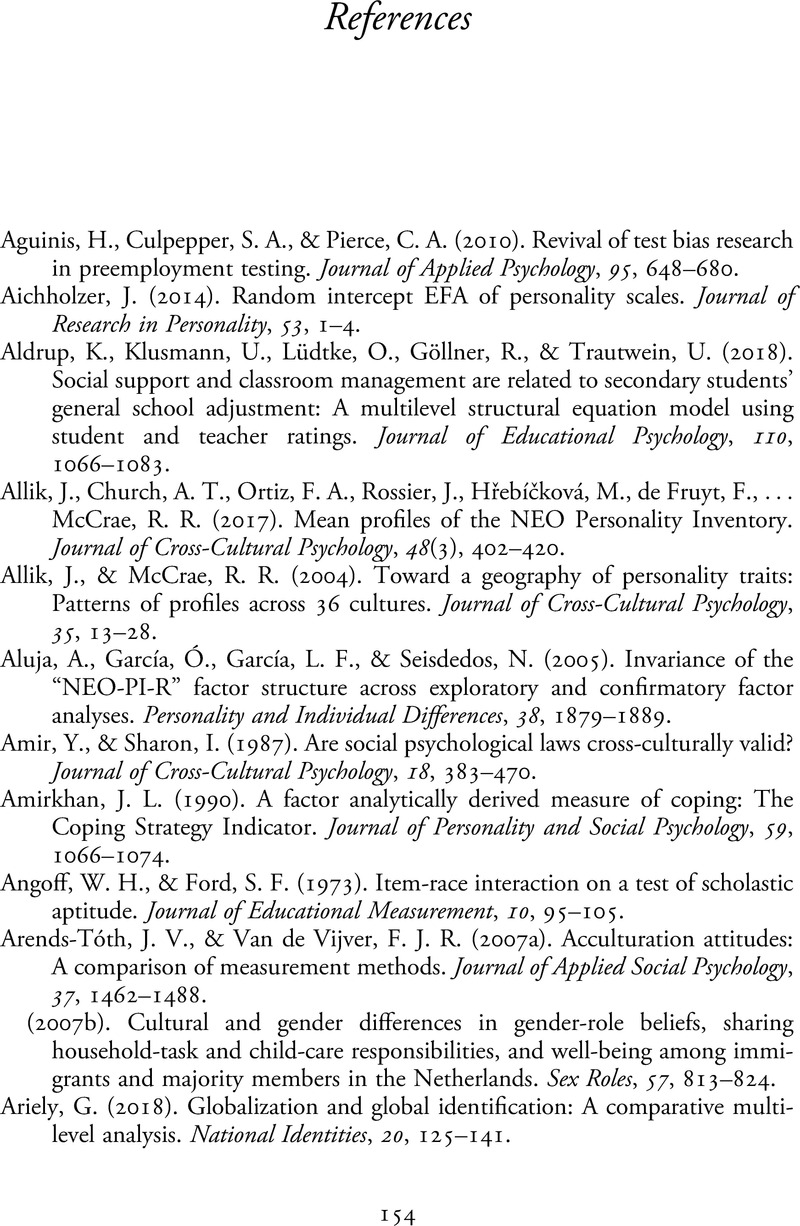Book contents
- Methods and Data Analysis for Cross-Cultural Research
- Culture and Psychology
- Methods and Data Analysis for Cross-Cultural Research
- Copyright page
- Dedication
- Contents
- Figures
- Tables
- Boxes
- Preface
- Introduction
- Chapter 1 Methodological Concepts in Cross-Cultural Research
- Chapter 2 Theoretical Background
- Chapter 3 Methods and Design
- Chapter 4 Analysis
- Chapter 5 Design and Analysis of Eight Common Types of Cross-Cultural Studies
- Chapter 6 Conclusions
- References
- Index
- References
References
Published online by Cambridge University Press: 15 June 2021
- Methods and Data Analysis for Cross-Cultural Research
- Culture and Psychology
- Methods and Data Analysis for Cross-Cultural Research
- Copyright page
- Dedication
- Contents
- Figures
- Tables
- Boxes
- Preface
- Introduction
- Chapter 1 Methodological Concepts in Cross-Cultural Research
- Chapter 2 Theoretical Background
- Chapter 3 Methods and Design
- Chapter 4 Analysis
- Chapter 5 Design and Analysis of Eight Common Types of Cross-Cultural Studies
- Chapter 6 Conclusions
- References
- Index
- References
Summary

- Type
- Chapter
- Information
- Methods and Data Analysis for Cross-Cultural Research , pp. 154 - 183Publisher: Cambridge University PressPrint publication year: 2021



